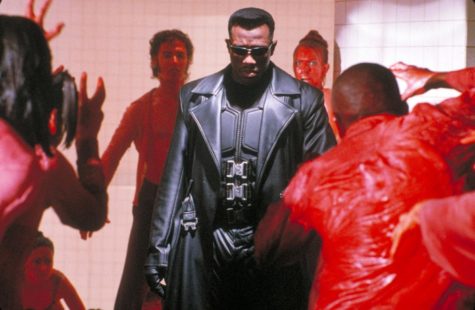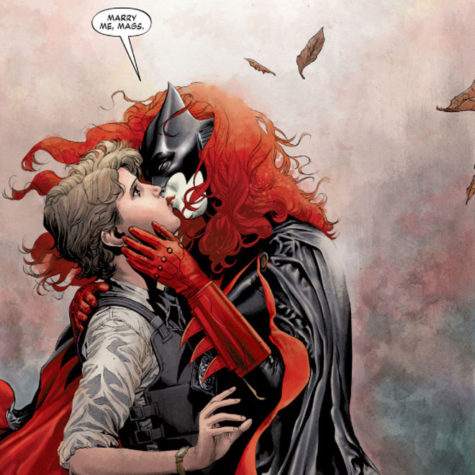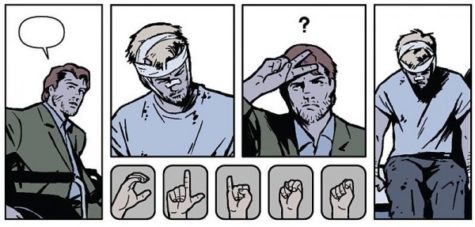Marvel V.S. DC Comics: Diversity
October 14, 2021
“Which is better?”
That’s the age-old question superhero fans have been pondering for decades. Both Marvel and DC Comics fans alike restlessly consider superpowers, character backstories, directors, actors, literally everything just to get to the bottom of this timeless inquiry. But recently, the conversation has shifted to the idea of inclusion, if either franchise has accurately represented their diverse fan base accurately or not. Men, women, non-binaries, people of color, people with disabilities, and members of the LGBTQ+ community, etc. all want to see themselves mirrored in print or on the big screen (preferably fighting bad guys).
So, the new question is:
“Which is better at creating diverse representation: Marvel or DC Comics?”
Racial Diversity
Both DC and Marvel Comics have not been historically known for having people of color as essential characters in their comics or movies. The earliest POC superhero in Marvel being Black Panther in 1966, featured in Marvel’s Fantastic Four comic issue. While the earliest POC superhero in DC Comics was John Stewart, a member of the green lantern corps, in 1971. But it’s not the 1960s anymore, so which one has more quality representation of different races? Well, it’s complicated (and kind of disappointing):

Cinematically, Marvel has had the first racial breakthrough featuring a person of color as a main character in Blade (1998), starring a black man as the lead role (Wesley Snipes). But in the early 2000s, they backpedaled, having most of the POC roles being nameless extras, supporting characters, and villains. Daredevil (2003) and Elektra (2005) memorably had POC being the main antagonist of the movie. Roxanne Simpson (Ghost Rider 2007) and James Rhodes (Iron Man 2008) are two noteworthy supporting characters. The next Marvel movie to have a person of color as the lead role was Black Panther in 2016, and Shang Chi and the Legend of the Ten Rings in 2021. While this may seem dismaying, Marvel Comics has a longer run of quality representation with characters without overt racial stereotypes. They touched on broader topics of anti-racism during times of civil unrest in the 1970s and 80s using the X-Men comics to correlate their struggles of racist groups during the red scare with with anti-mutant groups in their universe. With a few bumps in the road, Marvel comic creators have continued to deep dive and star poc as leads for their new generation of movies and comics, some of which becoming fan favorites like Miles Morales, Ms. Marvel, and Nova.
DC Comics and their cinematic universe, however, cannot say the same. While most of their movies were released in the late 2000s, the only major role of a person of color was Morgan Freeman in Christian Bale’s rendition of Batman. The bulk of POC in DC movies were voice actors in the numerous animated movies which, to their credit, was a large part of DC Comics branding at the time. In their comic universe their racial diversity expands considerably early on as major characters such as Ra’s al Ghul and his clan (1971). Black Lightning (1977), and El Diablo (1970) were some of DC’s statement characters. Much like Marvel, they are building the new generation to include different backgrounds and cultures with debut teens of color in Young Justice, Teen Titans, and the Justice League. Their cinematic universe in the present reflects this new plight for inclusion with Justice League and Suicide Squad including a diverse selection of actors like Gal Gadot, Jason Momoa, Ezra Miller, Will Smith, Viola Davis, Jay Hernandez, and more.
LGBTQ+ Representation
Not surprisingly, LGBTQ+ members follow in the same unrepresented footsteps as people of color in superhero media as a whole. The first openly gay superhero was Alpha Flight’s Northstar from Marvel’s Uncanny X-Men #120 comic issue in 1979. DC was not far behind with the appearance of Extraño in Millenium #2, issue in 1988. While Marvel got the jump on having an openly gay hero, DC Comics has consistently pushed forth gay representation throughout the years following.

From the first comic issue including Extraño, DC developed their characters with queer portrayal in mind. So throughout the 1990s and into the 2010s, DC Comics has not shied away from queer representation as a majority of their characters were distinctly identified LGBTQ+. Not only does DC identify many mainstream characters as LGBTQ+ such as Batwoman, Wonder Woman, and Tim Drake, but they explore more serious topics of relationships and culture that comes with being queer. Those topics are evident in Enigma (1993) which explores the realistic discovery and acceptance of the protagonist’s sexual orientation. They showcase the sapphic nature of the Amazonians, the complex relationship of Apollo and Midnighter in Midnighter (2015), gender orientation/trans representation in Doom Patrol (1989) the famous comic Sandman (1991), and the plain naturality of being queer in Outsiders (2000s). In present times, DC Comics continues to push LGBTQ+ representation as seen in their 2021 showcase of queer characters during Pride Month in June.
Marvel has taken a slower approach to LGBTQ+ representation, having most of their quality inclusions in the 2010s. Marvel’s queer representation mainly takes form in their newer and younger generations of superheroes such as the 2017 rendition of Generation X, The New Mutants, America Chavez: Made In The USA, and the Young Avengers all including queer teens/young adults as lead characters. Much like their treatment of racial inequality, they centralized their inclusion in their X-Men comics. Most of their queer characters (at least the earlier comic characters) were heavily featured in the X-Men comics new and old. Famous X-Men queer relationships included Mystique and Destiny, Shatterstar and Rictor, and Northstar and Kyle Jinadu.
Disabilities
Disabilities in general are still underrepresented in cinema, and that doesn’t exclude superhero media. However, there are some significant characters in both Marvel and DC Comics that have disabilities in both writing and on screen.

Marvel is famous for their disabled character DareDevil aka Matt Murdock, first appearing in the Daredevil comic in 1964, Murdock is both blind and suffering from depression. His series centers around how he uses his other enhanced senses rather than sight to fight crime. While one of the most popular heroes, he is not the first disabled character from Marvel by far. From the Golden ages of the 40s and 50s, Doctor Mid Nite (1941) has been regarded as one of the first superheros with a physical impairment as he was blinded yet gained the ability to see in complete darkness. Other heros such as Echo (1999) who is deaf, Misty Knight (1975) and The Winter Soldier (1941) who are amputees, Hawkeye (1964) who is hard of hearing, and Professor X (1963) who is paralyzed from the waist down are some of the heroes who are physically impaired. Mental disabilities are more commonly touched on in the hero community, even if less talked about. Multiple mainstream heroes such as Thor, Wolverine, and Iron-Man have mental disabilities explored in both comics and in movies. It’s one of the realistic aspects of hero work Marvel has adapted into their characters for depth and angst and whether its appropriate or accurate is still up for discussion.
Disabilities in DC Comics take a similar stance, focusing more on the psychological aspect of both heroes and villains heavily in the comics. Starting with characters with physical disabilities, Barbara Gordon aka Batgirl was paralyzed by the Joker in Batman: The Killing Joke (1988) and became Oracle (1989), a wheelchair bound hero that uses technology to run a worldwide communications network aiding other heroes with intel and organization efforts. Other physically impaired heros include Cyborg (1980), and Jericho (1984). However, villains take the forefront of stories that include mental disabilities, Gotham City’s Arkham Asylum infamously housing the both the criminally insane and most of Gotham City’s antagonists. Mental turmoil in DC Comics takes many forms, grim depictions are represented in Batman: Living Hell and Death of the Family (and a lot of Batman comics due to its gothic origins). However, some stories show the process of coping and healing with mental disabilities, like in the Justice League Unlimited animated series where the Trickster is talked down by the Flash and convinced to return to the mental hospital.
What’s the verdict?
Well, inclusion is subjective. A certain identity or culture might be introduced in a character, but that doesn’t always mean that that characteristic is a good representation of that identity/community. And while that character might be a bad representation to some, to others it might be the perfect depiction. Throughout the years both companies have gone through their ups and downs, bad representations and good representations of many communities. So, it’s up to us, the viewers. to explore, learn, and evaluate for ourselves what we think of inclusion of different communities. And only then will we be able to answer the question of which is better, “Marvel or DC?”.